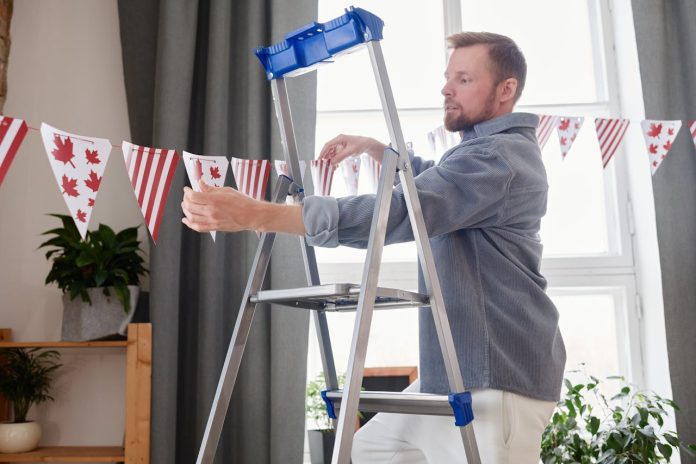Whether you’re cleaning your gutters, painting a wall or changing a light bulb, a ladder is an essential tool for many DIY projects.
However, ladders and steps are among the leading causes of DIY-related accidents and can cause serious injury if used improperly. To help you stay safe during your DIY endeavours, here are some of our top tips for DIY ladder safety.
1. Choose the right ladder for the job
Choosing a ladder that suits the task at hand is paramount for your safety. Your ladder should be tall enough that you don’t have to stand on the top three rungs, but not so tall that it is unstable and hard to secure.
You should always consider what size, style and material are most appropriate for your DIY task. For example, if you are working around electrical hazards, you should use a fibreglass ladder that doesn’t conduct electricity.
It is also essential to check your ladder’s weight capacity before usage and ensure that it can take your weight plus the weight of any tools or materials you will be carrying.
2. Inspect your ladder thoroughly
Before every use, it is crucial that you check your ladder thoroughly for any faults or signs of damage. Key areas to check for damage, dirt and wear include the ladder stiles, rungs, feet and locking mechanisms. You should also make sure that there is no paint, grease or stickers on your ladder that may reduce traction and lead to accidents.
If you spot any problems, do not use the ladder! Instead, buy a new ladder from a trusted supplier like Ladders UK Direct.
3. Set up your ladder correctly
Proper ladder setup is key for your safety. Always make sure you are setting up your ladder on a solid and level surface in a safe environment. Ladders placed on slick floors, rugs or near electrical lines can pose a huge risk to your safety. You should also avoid using your ladder outside in wet conditions or if there are high winds.
Remember the 4:1 rule – for every 4 feet of ladder height, the base of the ladder should be 1 foot away from the surface it is leaning against. For example, if your ladder is 8 feet high, the base should be 2 feet away from the wall. This ensures that your ladder has maximum stability and reduces the risk of it falling over.
4. Climb safely
Once your ladder has been inspected and properly set up, you are ready to climb! One rule for using ladders safely is to ensure you have three points of contact with the ladder at all times. Preferably, this will be two feet and one hand; however, if you need both hands to complete the job, you can lean your knees or chest against the ladder to create a third point of contact.
Another important rule to remember is the so-called ‘belt buckle rule’. Leaning to one side while using a ladder at height risks the ladder becoming unbalanced and tipping over; this is why it is recommended that you keep your belt buckle – or your belly button if you don’t wear a belt – in between the ladder’s side rails. If you find yourself having to lean to one side to get at a hard-to-reach spot, climb down your ladder and reposition it instead.
5. Store your ladder properly
Finally, once you have completed your DIY task, always make sure you store your ladder properly in a safe place. It is always safest to store your ladder lying down or horizontally on a ladder rack to avoid it toppling over and causing injury. You should also always ensure your storage place is dry to protect your ladder from rust and rot.
Conclusion
Using a ladder may seem like a simple part of your DIY project, but without taking safety guidelines into consideration, ladders can be dangerous and lead to serious injury. The best way to ensure your DIY project is not only successful but also safe is to understand the risks associated with using ladders at height and make sure you take the proper precautions.
Good luck with your DIY!







